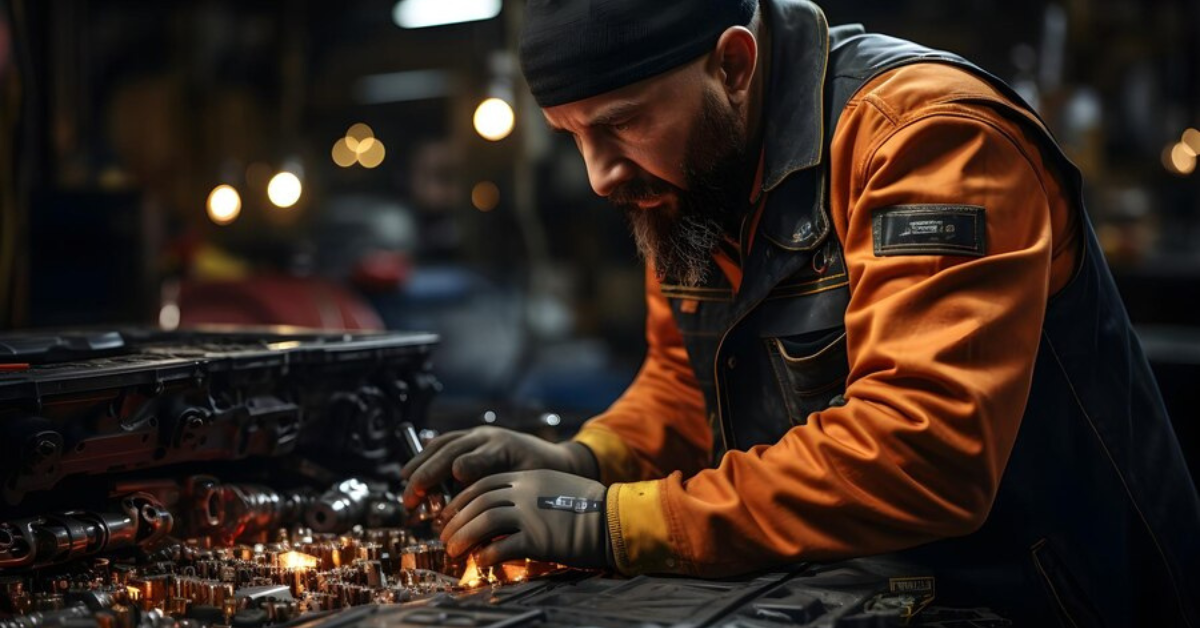Pitting corrosion is a common concern in industries involving metal equipment and machinery. Among these, the VT1000, a powerful and frequently used piece of machinery, is often prone to pitting issues. Whether you’re a technician, a maintenance specialist, or simply interested in understanding the causes and prevention of pitting, this article dives deep into what VT1000 pitting is, how it occurs, and effective ways to prevent it.
Table of Contents
- What is VT1000 Pitting?
- Common Causes of Pitting in VT1000
- Why Preventing Pitting is Important
- Effective Methods for Preventing VT1000 Pitting
- Regular Maintenance Tips for VT1000
- Signs of Pitting and When to Take Action
- Conclusion
1. What is VT1000 Pitting?
Pitting is a specific form of corrosion that affects the VT1000, creating small, localized cavities or “pits” on the metal surface. Unlike general corrosion that wears down surfaces evenly, pitting targets isolated areas, making it harder to detect and more difficult to treat. Left unchecked, these pits can expand, compromising the structural integrity and efficiency of the VT1000.
1.1 Why is Pitting a Concern for VT1000?
Pitting not only affects the machinery’s appearance but also poses a risk to its performance. The pits can lead to increased friction, which can strain the machinery, resulting in early wear and potential breakdowns. Understanding how to spot and prevent pitting is crucial for anyone responsible for maintaining the VT1000.
2. Common Causes of Pitting in VT1000
Pitting in the VT1000 is influenced by various environmental and operational factors. Here are the primary causes:
2.1 Moisture Exposure
The presence of moisture is one of the leading causes of pitting corrosion in metal machinery. The VT1000, when exposed to high humidity or direct water contact, may develop pits over time due to electrochemical reactions.
2.2 Chemical Exposure
VT1000 machines used in environments with exposure to harsh chemicals, such as chlorides, sulfides, and acids, are prone to pitting. These chemicals can create localized corrosion, especially if the machinery’s surface is not adequately protected.
2.3 Temperature Variations
Frequent temperature changes can weaken the metal, making it more susceptible to pitting. When exposed to extreme temperatures, the metal can expand and contract, forming microcracks that can evolve into pitting over time.
2.4 Improper Maintenance
Without regular cleaning, inspection, and maintenance, small issues like surface damage, contaminants, or moisture can develop into significant pitting problems.
3. Why Preventing Pitting is Important
Preventing pitting is essential to ensure the VT1000 operates efficiently and lasts longer. Here’s why:
- Operational Efficiency: Pitting can affect the smooth movement of parts, leading to performance issues.
- Reduced Downtime: By preventing pitting, you reduce the chances of unexpected repairs and associated downtime.
- Cost Savings: Repairing or replacing parts damaged by pitting can be expensive. Preventative measures save both time and money in the long run.
4. Effective Methods for Preventing VT1000 Pitting
Preventing pitting in the VT1000 involves several practices, each designed to combat common corrosion-causing factors.
4.1 Regular Cleaning and Drying
One of the simplest yet most effective ways to prevent pitting is to keep the machinery clean and dry. After every use, ensure the VT1000 is wiped down and dried thoroughly, especially if it has been exposed to moisture or chemicals.
4.2 Use of Corrosion-Resistant Coatings
Applying corrosion-resistant coatings to the VT1000’s metal parts creates a barrier, protecting it from moisture and chemical exposure. Common coating types include:
- Paints and Lacquers: Ideal for general protection and often used in machinery to protect exposed metal surfaces.
- Epoxy Coatings: Known for their durability, epoxy coatings offer a strong layer of protection against chemicals and moisture.
4.3 Controlled Environment
Whenever possible, store and operate the VT1000 in a controlled environment to limit exposure to humidity and temperature changes. For instance, using dehumidifiers in storage areas can help keep the air dry, reducing the risk of pitting corrosion.
4.4 Use of Protective Oils and Lubricants
Oils and lubricants serve as barriers, preventing moisture and contaminants from coming in direct contact with the metal surface. Always use lubricants designed specifically for your VT1000 to ensure compatibility and optimal protection.
4.5 Regular Inspections
Implement a routine inspection schedule to check for signs of pitting, such as discoloration, tiny holes, or rough patches. Identifying pitting early allows for prompt action, minimizing the risk of deeper, structural damage.
5. Regular Maintenance Tips for VT1000
Routine maintenance not only prevents pitting but also prolongs the life of the VT1000. Here are essential maintenance practices to keep your machinery in top condition:
5.1 Daily Cleaning
A quick daily clean-up can significantly reduce the build-up of dirt, moisture, and contaminants on the VT1000.
5.2 Weekly Inspections
Conduct a thorough inspection of the machinery every week, paying close attention to hard-to-see areas where pitting might develop.
5.3 Scheduled Lubrication
Ensure all moving parts are lubricated per the manufacturer’s recommendations. Proper lubrication prevents friction and reduces pitting caused by micro-damage from movement.
5.4 Biannual Coating Application
Depending on usage and environment, apply a fresh protective coating every six months to reinforce the barrier against corrosive elements.
6. Signs of Pitting and When to Take Action
Identifying early signs of pitting is key to preventing extensive damage. Here are common indicators:
- Discoloration or Rusting: Discolored patches or rust stains can signify the early stages of pitting corrosion.
- Small Holes or Indentations: These are classic signs of pitting, typically appearing as small, localized areas of damage.
- Rough Surface Texture: If parts of the VT1000 feel rough or uneven, pitting might be the cause.
6.1 What to Do If You Notice Pitting
If you detect signs of pitting, consider these immediate steps:
- Clean the Area: Use a dry cloth to remove any moisture or contaminants.
- Apply Anti-Corrosion Treatment: Apply an anti-corrosion solution to the affected area to prevent further pitting.
- Consult a Specialist: For significant pitting, consult a professional to assess the damage and recommend the best repair methods.
7. Conclusion
Pitting corrosion can be a significant issue for VT1000 machinery if not managed properly. Understanding its causes and knowing how to prevent it will help you maintain your equipment in optimal condition. Regular maintenance, proper cleaning, controlled environments, and prompt action when signs of pitting are identified can all contribute to reducing corrosion and prolonging the life of the VT1000. Taking these preventive steps not only protects your investment but ensures the safety and efficiency of the VT1000 for years to come.
FAQs on VT1000 Pitting
1. What exactly is pitting in the context of VT1000 machinery?
Pitting is a form of localized corrosion that creates small holes or “pits” on the metal surfaces of machinery like the VT1000. This type of corrosion occurs when certain environmental factors, such as moisture or chemical exposure, cause concentrated damage to isolated spots on the metal, weakening the overall structure.
2. How does pitting affect the performance of the VT1000?
Pitting affects performance by increasing friction, which can cause overheating, reduce efficiency, and lead to mechanical failure over time. These pits weaken the structural integrity of the machinery and can contribute to early wear or breakdowns if left untreated.
3. What are the main causes of pitting on the VT1000?
Pitting on the VT1000 is commonly caused by:
- Moisture Exposure: Humidity or direct water contact can trigger corrosion.
- Chemical Exposure: Chemicals like chlorides or acids can initiate localized corrosion.
- Temperature Fluctuations: Repeated heating and cooling cycles weaken metal, making it susceptible to pitting.
- Lack of Maintenance: Without regular care, minor issues can escalate into pitting.
4. How can I prevent pitting on my VT1000?
To prevent pitting:
- Keep the VT1000 clean and dry after use, especially if exposed to moisture.
- Apply protective coatings such as paints, lacquers, or epoxies to shield the metal from corrosive elements.
- Use lubricants and protective oils to create a barrier against moisture and contaminants.
- Store the VT1000 in a controlled environment with minimal humidity and stable temperatures.
5. How often should I inspect my VT1000 for pitting?
It’s recommended to conduct weekly inspections to check for early signs of pitting. Additionally, include detailed inspections in regular maintenance routines, such as monthly or quarterly, depending on the environment and frequency of use.
6. What are the signs of pitting I should look out for?
Signs of pitting on the VT1000 include:
- Discoloration or Rust Spots: Indicates early-stage corrosion.
- Small, Isolated Holes: Typical signs of pitting appearing as tiny pits or cavities on metal surfaces.
- Rough or Uneven Texture: Parts of the surface may feel rough, indicating surface degradation.
7. What should I do if I notice pitting on the VT1000?
If you spot pitting, immediately:
- Clean the affected area to remove moisture or contaminants.
- Apply an anti-corrosion treatment to halt further damage.
- Consult a specialist if the pitting is severe, as they can advise on repair or replacement options.
8. Can pitting be repaired, or is it permanent?
In some cases, pitting can be managed with specific treatments, such as sanding, polishing, and applying anti-corrosion coatings. However, severe pitting may require part replacement to ensure the machinery’s safety and performance.
9. Does VT1000 require special coatings to prevent pitting?
Yes, applying corrosion-resistant coatings like epoxy or protective lacquers can be highly effective in preventing pitting. These coatings create a protective layer that shields the metal from moisture, chemicals, and other pitting-inducing factors.
10. How does temperature affect pitting on the VT1000?
High or fluctuating temperatures can expand and contract the metal, leading to microcracks that make the surface more susceptible to pitting. Consistent temperature control in storage and use can help minimize this risk.





